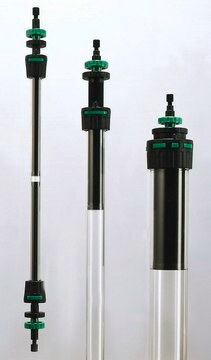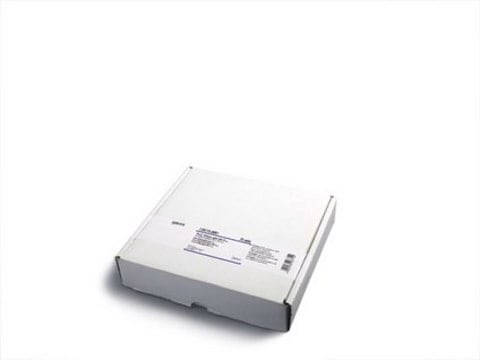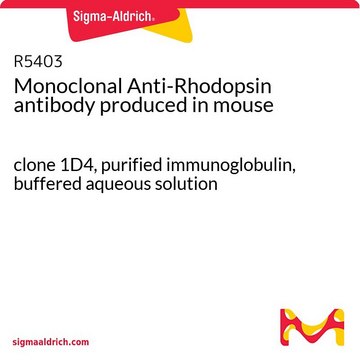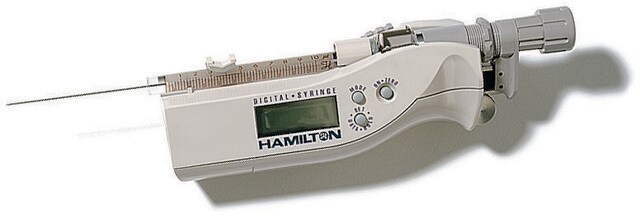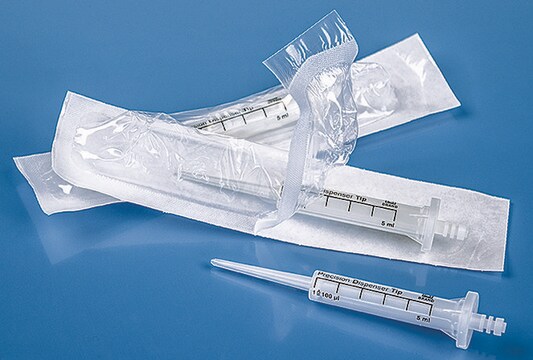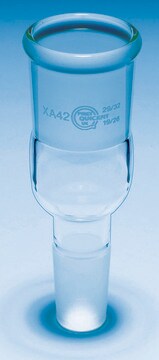Allgemeine Beschreibung
We are committed to bringing you greener alternative products, which adhere to one or more of The 12 Principles of Green Chemistry.This antibody is Preservative-free, produced without the harm or sacrifice of animals and exceptionally stable to allow for ambient shipping and storage if needed and thus aligns with "Waste Prevention", "Designing Safer Chemicals" and "Design for Energy Efficiency".
Click here for more information.
ZooMAb® antibodies represent an entirely new generation of recombinant monoclonal antibodies. Each ZooMAb® antibody is manufactured using our proprietary recombinant expression system, purified to homogeneity, and precisely dispensed to produce robust and highly reproducible lot-to-lot consistency. Only top-performing clones are released for use by researchers. Each antibody is validated for high specificity and affinity across multiple applications, including its most commonly used application. ZooMAb® antibodies are reliably available and ready to ship when you need them.
Spezifität
Clone 4D2 is a ZooMAb® mouse recombinant monoclonal antibody that specifically detects Rhodopsin.
Immunogen
Bovine photoreceptor rod outer segment disc membranes.
Anwendung
Quality Control Testing
Evaluated by Western Blotting in Human retina tissue lysate.
Western Blotting Analysis: A 1:100,000 dilution of this antibody detected Rhodopsin in Human retina tissue lysate.
Tested Applications
Western Blotting Analysis: A 1:100,000 dilution from a representative lot detected Rhodopsin in Mouse eye tissue lysate.
Immunofluorescence Analysis: A 1:30,000 dilution from a representative lot detected Rhodopsin in Rat retina tissue sections.
Immunohistochemistry (Paraffin) Analysis: A 1:30,000 dilution from a representative lot detected Rhodopsin in Rat retina tissue sections.
Note: Actual optimal working dilutions must be determined by end user as specimens, and experimental conditions may vary with the end user.
Zielbeschreibung
Rhodopsin (UniProt: P02699; also known as Rho) is encoded by the RHO gene (Gene ID: 509933) in bovine. Rhodopsin is a G-protein coupled photoreceptor with seven transmembrane domains found in the rod cells of retina. It is the primary photoreceptor molecule required for image-forming vision at low light intensity. It is required for photoreceptor cell viability after birth. It is synthesized in the rough endoplasmic reticulum of the inner segments of photoreceptors and subsequently undergoes post-translational modifications in the Golgi before becoming functional. It consists of the complex of a rod-type opsin with the chromophore ligand 11-cis-retinal acting as an inverse agonist. Photoisomerization of the chromophore converts the ligand in the all-trans form acting as the receptor agonist. In the dark, 11-cis retinal locks the receptor in an inactive state and the maintenance of an inactive rhodopsin in the dark is critical for rod photoreceptor cells to remain highly sensitive. The photoactivated receptor triggers a highly amplified signal transduction cascade. When light activates rhodopsin, GDP is exchanged for GTP on the G-protein, transducing (Gtα), consequently increasing cGMP hydrolysis through the phosphodiesterase complex. When cGMP concentration decreases, the cGMP-gated channels close, preventing depolarization induced by the influx of Na+ and Ca2+. Activation of rhodopsin by light is followed by a small, graded hyperpolarization in membrane potential. Changes in rhodopsin are reported to contribute to the early events of retinal degeneration. In humans, mutations in RHO are associated with retinitis pigmentosa and autosomal dominant congenital stationary night blindness. This ZooMAb® recombinant monoclonal antibody, generated by our propriety technology, offers significantly enhanced specificity, Affinity™, reproducibility, and stability over conventional monoclonals. (Ref.: Lenahan, C., et al. (2020). Front. Neurosci. 14; 326; Park, PS-H. (2014). Adv. Pharmacol. 70; 1-36; Hicks, D., and Barnstable, CJ. (1987). J. Histochem. Cytochem. 35(11); 1317-1328; Mackenzie, D., and Molday, RS. (1982). J. Biol. Chem. 257(12); 7100-7106).
Physikalische Form
Purified recombinant mouse monoclonal antibody IgG, lyophilized in PBS, 5% Trehalose, normal appearance a coarse or translucent resin. The PBS/trehalose components in the ZooMAb formulation can have the appearance of a semi-solid (bead like gel) after lyophilization. This is a normal phenomenon. Please follow the recommended reconstitution procedure in the data sheet to dissolve the semi-solid, bead-like, gel-appearing material. The resulting antibody solution is completely stable and functional as proven by full functional testing. Contains no biocide or preservatives, such as azide, or any animal by-products. Larger pack sizes provided as multiples of 25 µL.
Rekonstituierung
300 µg/mL after reconstitution at 25 µL per vial. Please refer to guidance on suggested starting dilutions and/or titers per application and sample type.
Lagerung und Haltbarkeit
Recommend storage of lyophilized product at 2-8°C; Before reconstitution, micro-centrifuge vials briefly to spin down material to bottom of the vial; Reconstitute each vial by adding 25 µL of filtered lab grade water or PBS; Reconstituted antibodies can be stored at 2-8°C, or -20°C for long term storage. Avoid repeated freeze-thaws.
Sonstige Hinweise
Concentration: Please refer to the Certificate of Analysis for the lot-specific concentration.
Rechtliche Hinweise
Affinity is a trademark of Mine Safety Appliances Co.
ZooMAb is a registered trademark of Merck KGaA, Darmstadt, Germany
Haftungsausschluss
Unless otherwise stated in our catalog or other company documentation accompanying the product(s), our products are intended for research use only and are not to be used for any other purpose, which includes but is not limited to, unauthorized commercial uses, in vitro diagnostic uses, ex vivo or in vivo therapeutic uses or any type of consumption or application to humans or animals.

